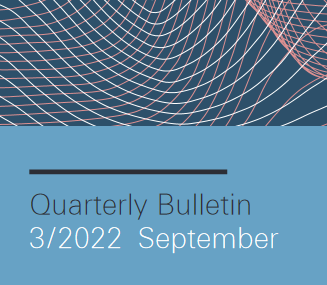 Monetary policy report
Monetary policy report
Report for the attention of the Governing Board of the Swiss National Bank for its quarterly assessment of September 2022
The report describes economic and monetary developments in Switzerland and explains the inflation forecast. It shows how the SNB views the economic situation and the implications for monetary policy it draws from this assessment. The first section (‘Monetary policy decision of 22 September 2022’) is an excerpt from the press release published following the assessment.
This report is based on the data and information available as at 22 September 2022. Unless otherwise stated, all rates of change from the previous period are based on seasonally adjusted data and are annualised.
Key points
- On 22 September 2022, the SNB decided to further tighten monetary policy. It raised the SNB policy rate to 0.5% in order to counter the rise in inflationary pressure and the spread of inflation to goods and services that have so far been less affected. The conditional inflation forecast was above that of June, and would have been significantly higher without the increase in the SNB policy rate.
- Global economic growth has slowed considerably in recent months. At the same time, inflation in many countries is markedly above central banks’ targets. In its baseline scenario for the global economy, the SNB expects weak economic growth in the coming quarters. Inflation will remain elevated for the time being.
- In Switzerland, too, economic momentum slowed. The SNB still expects GDP growth of around 2% for 2022. The level of uncertainty associated with the forecast remains high.
- Annual CPI inflation continued to rise, and stood at 3.5% in August. The short-term inflation expectations derived from surveys presented a mixed picture. The longer-term inflation expectations remained within the range consistent with price stability.
- The Swiss franc appreciated slightly more strongly in nominal than in real terms. High global uncertainty about economic and inflation developments as well as the outlook for monetary policy caused bond yields to fluctuate strongly. Real estate prices rose. Growth in monetary aggregates slowed further. Lending growth remained robust.
Tags: Featured,newsletter



























